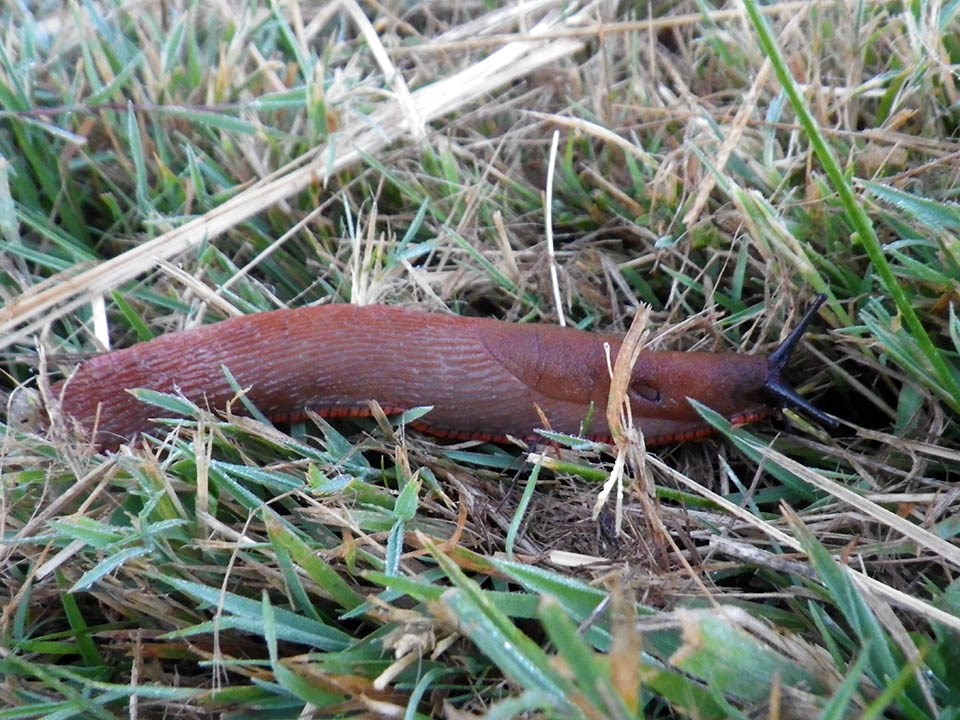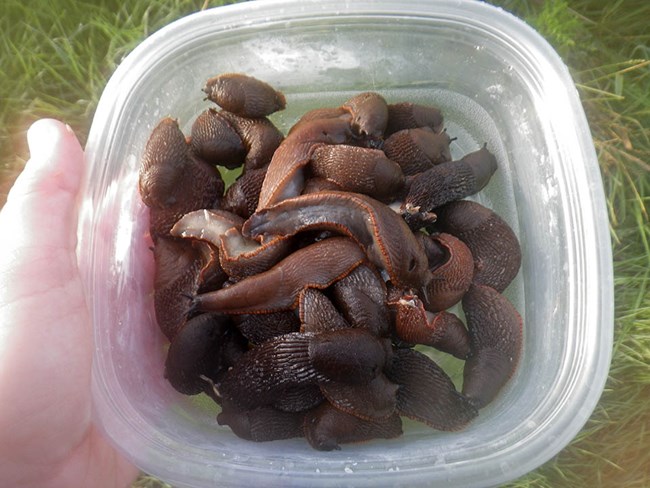Last updated: May 11, 2018
Article
Comparative Ecology of the Native Banana Slug and a Comparably-sized Invasive Slug in Washington State
There are two very obvious, large slugs species on San Juan Island: the native banana slug Ariolimax columbianus and the invasive Arion rufus (black and brown morphs). The non-native slug Arion rufus was introduced from Europe within the last century. Dr. Erika Iyengar and her students from Muhlenberg College have been studying slugs in San Juan Island National Historical Park for the last four years. Their research is focused on food and habitat preferences for each species and how climate change may impact their future ecology.

NPS

NPS
Slugs are nocturnal detritivores, but little is known about the particular feeding preferences of these two species or whether they compete with each other for food. Some observations have indicated that the black morph of Arion rufus prefers wooded areas and the brown morph is more common in grasslands. The native banana slug does not inhabit grasslands. Dr. Iyengar’s surveys over the past four summers on San Juan Island indicate that the relative frequency of these two slug species is shifting dramatically in some locations, with the invasive species becoming much more common than the native banana slug, perhaps in part due to impacts of drought.

NPS
Is the European slug a better competitor than the native banana slug? Will this lead to extirpation of our native slug? How will changing climates impact the future ecology and interactions of the two species? These are questions that Dr. Iyengar hopes to be able to answer!
For More Information
Erika Iyengar
Professor of Biology
Muhlenberg College
